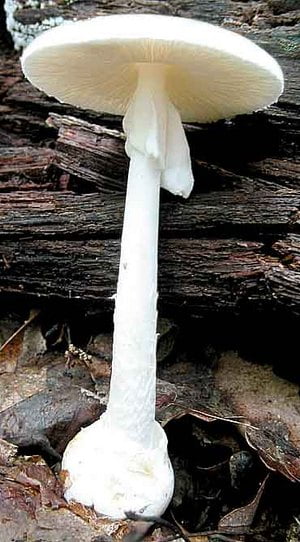Amanita mushrooms have a long history of use in both North America and Eurasia due to their potent effects as a deliriant drug. However, there are certain species of amanita that are safe and other species of amanita that are not safe. I will explain which are the ones that are commonly (and safely) used as a psychoactive and which species are potentially dangerous to humans.
Amanita is a genus of mushroom that includes more than 600 species. Although some species contain alkaloids responsible for a psychoactive experience such as varieties of amanita muscaria (fly agaric), there are some species that are among the most deadly mushrooms on earth. Unfortunately, like many mushrooms, some harmless species of amanita cannot be easily distinguished from the dangerous ones. It is inadvisable to try and obtain any kind of mushrooms for human consumption in nature unless you are a trained mycologist or know someone who is. Going by appearances alone can cost you your life. Here is some basic information on three potentially dangerous species of amanita mushrooms that can be found in America.
Amanita pantherina, commonly known as the panther cap mushroom is so named because of its mottled brown cap. The panther cap has often been mistaken by people searching for Fly Agaric Amanitas. The color variation of the Fly Agaric from deep red to a light, reddish-brown has caused confusion with inexperienced people and has led them instead to harvest and ingest the panther cap. Although it contains muscarine, the deliriant substance responsible for the psychoactive effects of the Fly Agaric, the panther cap also contains a number of toxic alkaloids. It has been responsible for the highest cases of mushroom poisoning in the Pacific Northwest, where it is commonly found alongside Fly Agaric Amanitas in moist conifer forests.
Amanita bisporigera and Amanita ocreata are two North American species of Amanita that are commonly called the destroying angel. The name is fitting because these species are some of the most dangerous mushrooms on earth. It is unlikely that someone searching forests for Fly Agaric Amanitas will mistakenly pick a destroying angel. They are small and completely white, with a curved, bell-shaped cap without spots. Although psychoactive seekers might not mistake a destroying angel for a fly agaric, someone seeking edible mushrooms that look similar might. The dangerous toxin of the destroying angel, known as amatoxin is most dangerous because its effects do not manifest themselves for up to a day after ingestion. This makes pumping a victim’s stomach a moot point. Symptoms include vomiting, cramps, and diarrhea and death can occur if enough damage is done to the liver and kidneys. Immediate medical attention is needed to allay the effects of the destroying angel, which is responsible for a majority of fatalities due to mushroom poisoning.
Amanita phalloides is commonly known as the death cap mushroom, and certainly lives up to its name. Although the cap resembles the shape of Fly Agaric amanitas, the death cap does not have spots and is a brown-to-olive green hue. Like the destroying angel, the majority of hospitalizations due to its ingestion are due mainly to people mistaking it for edible mushrooms, not psychoactive Fly Agaric amanitas. Yet, the danger of this mistake is still present in novices. It has a pleasant taste, and like the destroying angel, the death cap does not manifest any adverse symptoms until several hours after ingestion. Also like the destroying angel, death can occur if medical attention is not sought quickly enough for damage wrought to the kidneys and liver.
The best advice I can offer to people who are seeking psychoactive amanitas in nature is to be informed to the utmost about what you are picking before you ingest it. Due to a delay in symptoms, you could die even with proper medical attention. Therefore, it is probably a good idea to either forego trying to obtain your own amanitas or at least consult with a licensed mycologist prior to dosing.
